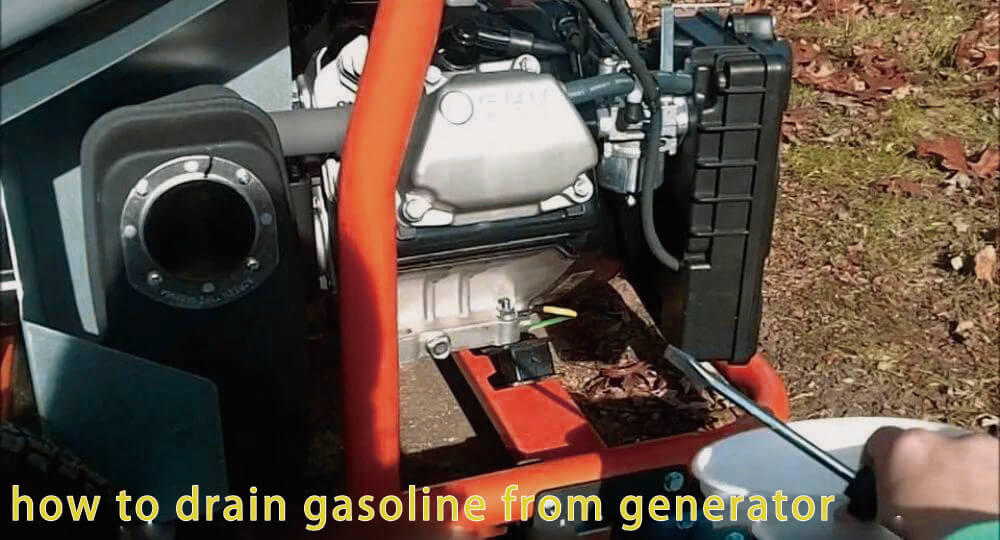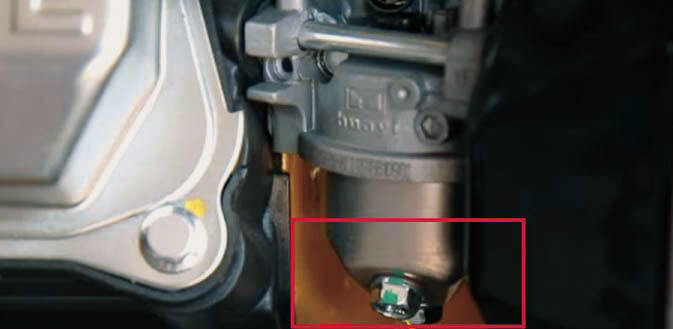08Jan 2023
table of contents

Bleeding petrol from a gasoline generator's tank is one of the surest ways to store your generator and ensure its longevity.
Siphoning gasoline from the generator before storage can prevent fuel-related problems. It helps prolong the life of your generator, avoids costly maintenance and most importantly keeps it ready for the upcoming season.
But how do you safely vent petrol from your generator?
In this article, BISON professional generator manufacturer will take you through the methods to safely empty the generator oil tank. We will also discuss safety aspects to keep in mind before emptying your tank. Finally, we'll discuss how to store and dispose of expelled fuel.
But let BISON generator manufacturers first answer why it is beneficial to drain the generator tank before long-term storage.
No, you don't have to bleed petrol from your BISON generator if you add fuel stabilizer before winterizing. However, venting gases from the generator is the surest way to prevent fuel-related problems in long-term generator storage.
When a generator with fuel in its tank is stored between camping seasons, gasoline begins to degrade. Gasoline, especially ethanol-blended gasoline, tends to absorb water from water, causing petrol oxidation.
Oxidation increases over time until the petrol in the tank becomes stale. Old, unchecked gummy fuel can clog your entire fuel system, preventing your generator from starting when you need it.
Still, if emptying the fuel tank is not a problem for you, you can use fuel stabilizer to prevent oxidation. However, for everyday users, BISON believes that venting the generator is the safest method for long-term storage.
Do all generators require ventilation?
All BISON generators that users use liquid fuels such as gasoline, diesel, etc. Oil must be drained or stabilized prior to storage. However, portable generators that run on propane do not need to go through a drain or stabilization process before winterizing.
Since both gasoline and diesel oxidize when exposed to oxygen, proper care is required when storing it. Therefore, generators that run on petrol or diesel must be stabilized or exhausted.
Safety tips for generator exhaust gases
BISON kindly reminds that when the equipment is running or very hot, do not empty the generator oil tank. Make sure to drain fuel in a proper fuel container and not on the ground.
The fuel used by generators to generate electricity is extremely flammable, and if spilled fuel comes into contact with a hot generator engine, it can catch fire. Make sure your generator is off and completely cool before venting the gas.
Drain the fuel from the generator to an external fuel tank or container for later use. Discharging fuel oil onto the ground or any body of water can cause accidents and pollution.
To bleed petrol from the inverter generator, locate the bleed line and open the fuel valve. If your generator doesn't have a drain, drain the fuel using the pipe that carries the fuel from the tank to the carbonator. You can also use an external fuel pump to pump the generator's fuel tank.
Before draining the generator air tank, first make sure the generator is not running and the engine is cool.
Now, take your generator to an open area that is well lit (preferably sunny) and place it on a hard, flat surface (concrete floor). Remove the alternator's fuel tank cap, it will suck in air when you bleed it.
You need to remove the side cover to access the fuel system, which is the case with most inverter generators. Once inside, locate the fuel drain line, where the carburetor on most BISON inverter generators is located.
Get a tank large enough to hold all the fuel in the generator tank. Place the generator on a slightly higher surface than the tank you will be using to vent the gas.
Then put the discharge pipe of the generator into the fuel container correctly, open the fuel valve and start to discharge the gas. Some inverter generators have a drain line that connects to the carburetor. For this type of generator, an extra step to drain the fuel from the tank is to loosen the drain screw located in the carburetor.
Access to fuel lines and carburetors is easy on BISON non-inverter generators since most generators do not have side covers. However, most don't even have a fuel drain line.
For generators that don't have a dedicated fuel drain line, you can use the carburetor or the fuel line that carries the petrol from the tank to the carburetor to vent the gas.
With the fuel valve in the closed position, remove the clips on the fuel line connected to the carburetor. Place the tubing in a fuel container large enough to hold all the petrol in the tank.
Now, open the fuel valve and wait for the alternator's fuel tank to empty. Once all petrol is vented into the fuel container, connect the fuel line the same way you removed the fuel line.
If you don't like the idea of removing the fuel line, you can also use the carburetor drain to draw fuel from the generator tank. All it takes is to find the bleed screw on the carburetor and loosen it until petrol starts to come out.
Bleeding the petrol through the carburetor, however, means that a funnel is required to get to the carburetor tube that sits inside the alternator frame.
Additionally, you can use an external fuel transfer pump to suck petrol from the BISON generator. Simply place one end of the pump into the generator's fuel tank and the other end into the petrol container, and start the pump. Fuel will be transferred from the generator to a storage container.
No matter what type of BISON alternator you are draining, make sure to wipe up any spilled fuel and properly tighten the fuel line or carburetor screws.
Removing an alternator side cover, a fuel line, or unscrewing a carburetor bleed screw can be overwhelming for most non-techies. For such generator owners, running the BISON generator until the unit runs out of petrol is the easiest and safest option, since you don't have to deal with fuel lines, highly flammable gasoline, and the hazards associated with it.
When you're out and about, just use the generator to power your RV and blow it dry with ease. All you have to do is top up the water tank to run everything throughout the drying process.

Locate the oil drain screw on the carburetor and loosen it until petrol starts to come out of it. Place a fuel container with a funnel to store the vented gas.
The main purpose of draining the generator's tank is to prevent fuel related problems during storage. However, emptying the tank only solves part of the problem.
To ensure your BISON generator starts properly at the start of the next camping season, you will need to dry out your carburetor before storing it. This is because gasoline oxidizes, leaving a gummy residue over time.
Since the carburetor is a confined space, deposits can build up and clog the interior, restricting fuel and airflow to the engine. To prevent a clogged carburetor, always run the engine after draining the fuel tank through the fuel or drain line.
When the engine is running, any fuel left in the carburetor is used by the engine, drying out the carburetor. However, this step is not necessary if you intend to run your BISON generator dry to run out of fuel.
If the fuel is still fresh, the drained fuel should be stored for later use. However, if the fuel goes bad, make sure not to dispose of it on the ground, in a sewer, or in any other body of water.
After emptying the generator fuel container, be sure to check the condition of the fuel before storing it. If the BISON generator was last run a day or two ago, the fuel is fresh.
To prevent fuel degradation at this point, all you have to do is add the appropriate fuel stabilizer to your storage container.
On the other hand, if the expelled fuel degrades, it will have a cloudy or dark texture with a sour taste. In this case, you'll need to discard the fuel, as adding fuel stabilizer won't help.
However, you can't dump fuel all you want, as the liquid is still flammable and poisonous. You will need to contact your local fire department and they will direct you to a suitable dump site.
Bleeding petrol from your generator prior to storage is one of the safest ways to keep your unit trouble-free in storage. It will prevent fuel related issues that prevent the generator from starting or worse, reducing costly maintenance or repairs.
If you have experience, you can use the drain or fuel line to drain the generator.
However, the easiest way to get petrol from a BISON generator is to power it until the unit runs out of gas. This eliminates the need to handle fuel or remove fuel lines, removing all risk factors.
inquiry form here
BISON BLOG, All the latest news and views from Bison Machinery.